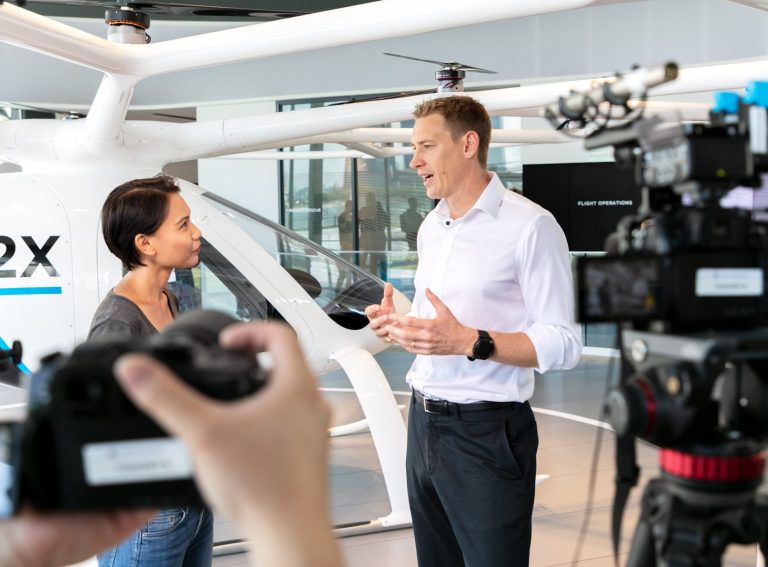Image Credit: Tom Courtright
The Africa Environment Outlook for Business report identifies significant untapped potential for green businesses.
Decarbonisation in Africa alone presents a $3 trillion investment opportunity.
With the continent’s population set to reach 2.5 billion by 2050 and the rising popularity of two- and three-wheeler vehicles, African cities are now well-placed for electrification.
Rob De Jong is Head of the United Nations Environment Programme’s (UNEP) Sustainable Mobility Unit – a position he has held for more than 20 years. “The motorisation rates are increasing more quickly in Africa than anywhere else in the world. The fleet in Nairobi doubles every eight years whereas in Europe, it is already saturated.”
Given the appetite for new vehicles, coupled with the expanding renewable energy sector in Africa, many countries are poised to make a direct transition to e-mobility.
“Petrol vehicles may be replaced by electric vehicles, but there isn’t much growth happening anymore in the developed world,” says De Jong. “Africa still has the opportunity to ‘leapfrog’ straight to e-mobility.
“For example, East African countries generate almost all of their power from renewables.”
Kenya already derives 90% of its energy from renewable sources like hydroelectric, geothermal, solar, and wind power. De Jong recounts a UNEP project underway in Kenya where President William Ruto has announced plans to roll out e-motorbikes nationwide. With African startup, Spiro, the plan will establish 3,000 battery-charging and swapping stations in the region.
Since many motorcycles are intensively used as ‘boda bodas’ or two-wheeled taxis, their lifespan is typically around five years. This means they can be replaced more quickly and are low-hanging fruit for electrification.
Reaching the full potential of the investment though, will require an alignment of public and private action.

“The first step is for governments to set targets and roadmaps on how to reach them,” explains De Jong. “Some countries are already doing that now.
“If the Kenyan government bans all petrol motorcycles, the result would stimulate local industry and local solutions. The private sector is vibrant enough that it will definitely create the solutions once the right conditions are in place.
“Secondly is the institutional availability of financing that would derisk loaning for electric motorcycles. Backing these financial institutions would ensure a secure framework for lending, making it more attractive for both consumers and lending institutions to make the shift to electric.
“So it is not an issue of subsidising. This is an issue of institutional availability of financing. Those are institutional reforms that need to take place.”
The Outlook report says adopting e-mobility and shared mobility will be crucial to achieving a low-carbon transportation transition, however these vehicle types remain limited due to the high initial cost, plus import duties and taxes. It is important to note that investment in the high initial cost of going electric is often quickly returned in savings using electricity over fuel.
“Since the taxes are higher due to the initial higher cost of electric motorcycles, we recommend that the government take action to implement a flat tax for all motorcycles rather than it being based on price.”
He insists that in the transition to e-mobility, a comprehensive transport solution is imperative, rather than isolated technical solutions.
“It wouldn’t make sense just to focus on electric vehicles and introduce them. It must be a comprehensive transport solution. Don’t only focus on the technology. Don’t only bring electric buses, but also ask yourself: how are they going to operate? How are we going to make sure their stations are where they’re supposed to be? Are we going to make sure there’s walking and cycling facilities that feed into those electric bus systems?”
The third recommendation de Jong calls for is the vehicles themselves to be manufactured locally. He explains that the vehicles used in India or the UK are not always suitable for the way they are used in Africa.
“The motorcycle taxis here often have two or even three people on the back, so they must be sturdier. They also need to be able to withstand different types of terrain.”
As the African continent continues to industrialise, the need for efficient, clean transportation rises. The increasing motorisation rates offer business opportunities across the mobility sector from manufacturing, vehicle and battery recycling, shared mobility solutions, repair and maintenance services, circular supply chain management, as well as training and skills development.
Through government action to set electrification targets and roadmaps, institutional availability of financing, and creating local supply to match growing demand, Africa has real potential to foster a vibrant electric vehicle ecosystem.





